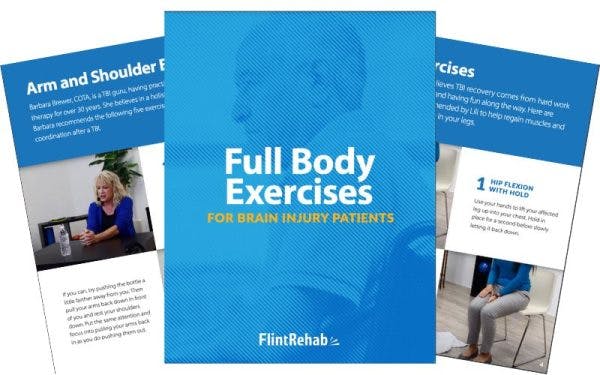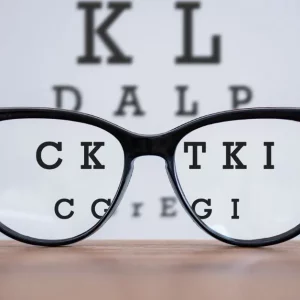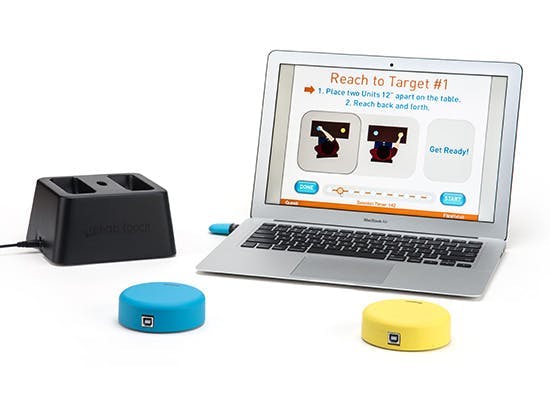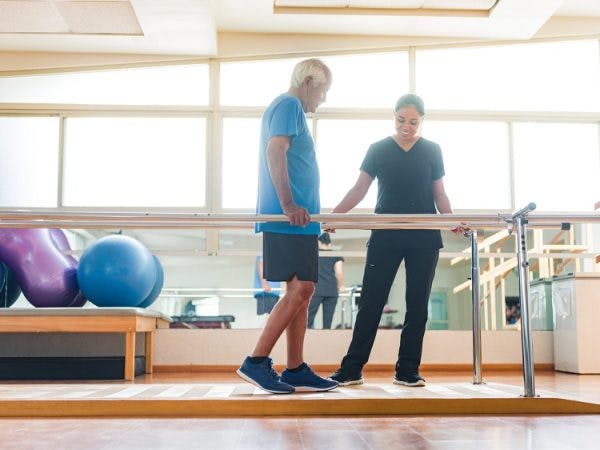Communication is a complex function that involves various skills such as attention, comprehension, speech, memory, and more. When cognitive skills become affected by a brain injury, cognitive speech therapy can help survivors improve their communication and overall cognitive function.
This article will discuss the causes and symptoms of cognitive-communication disorders, as well as numerous cognitive speech therapy exercises you can try at home.
Causes of Cognitive-Communication Disorders
Many of the cortical (outer layer of the brain) and subcortical (deeper) structures of the brain responsible for cognitive processes can become damaged after a traumatic brain injury. This can result in a cognitive-communication disorder that causes symptoms such as difficulty paying attention during conversation, recalling information, or following instructions. Cognitive-communication disorders can occur individually or in combination with other language conditions such as aphasia, dysarthria, or apraxia of speech depending on the areas of the brain affected.
For example, damage to the Wernicke’s area can lead to fluent aphasia, a language disorder where a person can speak fluently, but their speech will not make sense. Individuals with this type of aphasia may use made-up words or simply connect words together in sentences that are nonsensical. Wernicke’s area is typically located in the left hemisphere of the brain, near the back of the temporal lobe. Injury to this region can affect an individual’s understanding of spoken and written language.
Another region of the brain that contributes to speech and language is located in the frontal lobe, usually on the left side. Damage to this area after a traumatic brain injury can result in expressive aphasia. This affects speech production, resulting in individuals having trouble with verbalizing what they would like to say.
Although those with expressive aphasia are typically able to understand most of what others are saying, responding verbally is often a slow and effortful process, and the process of finding the right words is frequently challenging. In both of these conditions, the motor components involved in speaking remain intact. However, individuals are unable to communicate effectively since the underlying cognitive components of speech have been affected.
Symptoms of Cognitive-Communication Disorders
Every brain injury is different, therefore every survivor may experience different symptoms of cognitive-communication disorders depending on the type of TBI sustained. Some symptoms may be similar to other problems or medical conditions.
Symptoms of cognitive-communication disorders may include:
- Trouble learning or recalling information
- Executive dysfunction
- Memory and attention problems
- Difficulties with social communication skills
- Speech or comprehension challenges
If you or your loved one experience any new cognitive or communication difficulty it’s important to consult with your speech-language pathologist (SLP) for a proper assessment. SLPs can distinguish between cognitive, language, and speech disorders. Thus, they can provide you with a customized plan of rehabilitation, including cognitive speech therapy exercises tailored to your condition and ability level.
What Is Cognitive Speech Therapy?
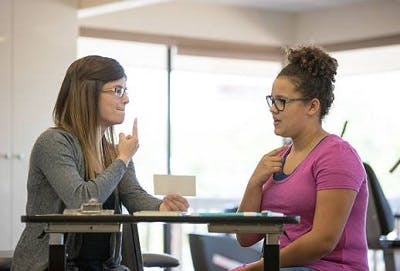
Communication skills are an essential component in mental processes used for speech and language. Speech in particular is a complex communication skill that not only involves the ability to physically form words with the mouth, but also the ability to cognitively process information and form a response. For example, some cognitive skills necessary for speech include:
- Attention
- Listening
- Comprehension
- Memory
- Problem-solving skills
After a brain injury, many of these cognitive skills can become impaired. Fortunately, cognitive speech therapy, also referred to as cognitive-communication therapy, is designed to help improve communication skills and restore cognitive function.
When the areas of the brain responsible for speech and language sustain an injury, many of the neural pathways become damaged or destroyed. Luckily, the brain has the ability to adapt and rewire itself through a phenomenon called neuroplasticity.
Neuroplasticity strengthens the existing neural pathways in the brain and creates new ones. It is best activated through high repetition of exercises, or massed practice. Therefore, practicing cognitive speech therapy exercises is crucial in order to help the brain heal and restore function. The more you practice, the higher the chances of regaining your cognitive and communication skills.
Cognitive-Communication Therapy Activities

Cognitive-communication interventions help survivors strengthen their cognition-based communication skills while adapting to their ability level. It’s important to practice exercises consistently to keep neuroplasticity stimulated. Some exercises target language while others may target cognition.
Here are some examples of cognitive speech therapy activities for adults:
1. Response-Elaboration Training (RET)
During response elaboration training (RET), your speech therapist will use a set of images depicting an action, such as a man pushing a lawnmower. Then they will ask a series of 5W questions (who, what, when, where, and why) to help you expand on your answer.
Response elaboration training helps survivors increase communication skills by expanding on an idea with practice. RET is sometimes referred to as “loose training” because there are no correct answers. For instance, an image may elicit a response such as “girl…dog” and after clarifying questions it may lead to “the girl is walking her dog to the park.” The goal is to encourage the individual to generate their own responses.
2. Naming Therapy
Another cognitive speech therapy exercise is naming therapy, which is often used to help individuals with aphasia recall words and improve memory. To practice this exercise, a caregiver or therapist can write down several general categories, such as animals, countries, foods, or sports. You can then try to recall and name (verbally or in writing) as many items in that category as possible.
If this is too challenging, you may also start simply by pointing to objects within your home or pictures in a book and verbally labeling them.
For an added challenge you can compare and contrast different items such as apples and oranges, or trumpets and clarinets. This is a great way to help you organize your thoughts and express them more clearly.
Consider asking your caregiver not to help you too much during this activity, requesting that they wait for you to ask for hints whenever you get stuck.
3. Task Sequencing
Task sequencing helps improve planning, comprehension, and reasoning skills. For this cognitive therapy exercise, first have a friend or caregiver write down the steps to complete a certain activity, such as turning on the TV and watching a show. Then, have them mix up the order before presenting the list to you.
Your goal is to rearrange the steps back into the correct order. As your skills improve, you can work on more complicated tasks, such as preparing a meal. This is a great way to stimulate your brain and working memory. If you have trouble with this, your caregiver could try taking pictures of each step of a task for you to sequence properly instead.
4. Spaced Retrieval
One of the best ways to improve your memory skills is through spaced retrieval, an evidence-based technique that helps individuals recall information over progressively longer intervals.
To practice spaced retrieval, create some flashcards with any new information you want to learn. Then wait two minutes and quiz yourself. If you get it right, increase your time by waiting 5 minutes then 10 minutes and more as you improve. The goal is to keep challenging yourself until the information is easier to recall.
5. Rhythm Matching
For this last cognitive speech therapy exercise, have someone tap out a simple, two-step rhythm several times with their hand on the table. Then try to match the rhythm. For an added challenge, you can face the opposite way of the caregiver or therapist to only focus on your auditory processing. This can help you improve your attention and listening skills.
Ask your speech therapist for activities based on the communication skills and cognitive abilities you want to target. They can provide you with many great exercises to do at home as well, which is essential to stimulate your brain and neuroplasticity on a consistent basis.
Practicing Cognitive Speech Therapy At Home
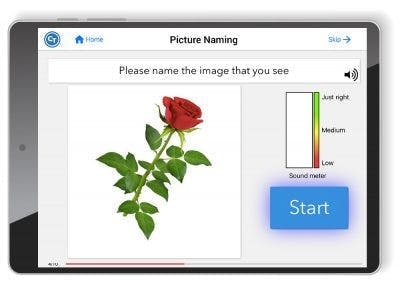
Many survivors attend outpatient therapy once a week, and although helpful, it is simply not enough to achieve the repetition necessary to consistently stimulate neuroplasticity. Therefore, it’s imperative to stay engaged in cognitive speech therapy at home.
To boost your motivation at home you can try fun cognitive therapy apps such as the CT Speech and Cognitive Therapy App. The CT app provides access to over 100,000+ exercises that help improve listening, attention, comprehension, executive functioning, and more. Maintaining a consistent home exercise program for traumatic brain injury can help you achieve your goals and see results more swiftly.
Understanding Cognitive Speech Therapy
While a traumatic brain injury can affect many cognitive-communication skills such as speech and memory, there is hope to restore function by performing cognitive speech therapy exercises.
Consistent practice is key to stimulate the brain and activate neuroplasticity. Your speech-language pathologist is a great resource for finding the most effective cognitive speech therapy activities suitable for you.
We hope this article helped you understand how to improve communication after brain injury and encouraged you to engage in cognitive speech therapy.


